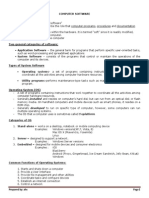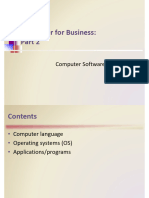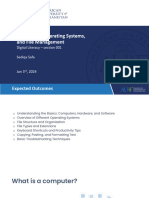0% found this document useful (0 votes)
8 views2 pagesDescriptive Software and OS Summary Class8
Software is a collection of instructions that operate computers, categorized into system software (like operating systems) and application software (like MS Word). An Operating System (OS) manages hardware and software, providing a user interface and security. Understanding software and OS is essential for utilizing computers effectively.
Uploaded by
shiprabiswas3011Copyright
© © All Rights Reserved
We take content rights seriously. If you suspect this is your content, claim it here.
Available Formats
Download as PDF, TXT or read online on Scribd
0% found this document useful (0 votes)
8 views2 pagesDescriptive Software and OS Summary Class8
Software is a collection of instructions that operate computers, categorized into system software (like operating systems) and application software (like MS Word). An Operating System (OS) manages hardware and software, providing a user interface and security. Understanding software and OS is essential for utilizing computers effectively.
Uploaded by
shiprabiswas3011Copyright
© © All Rights Reserved
We take content rights seriously. If you suspect this is your content, claim it here.
Available Formats
Download as PDF, TXT or read online on Scribd
/ 2





























































